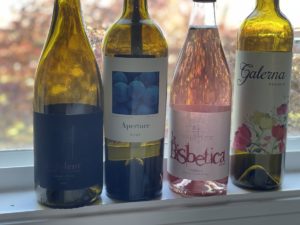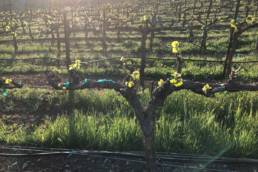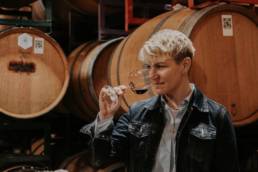FMN – February 2024 – Wines for Groundhog Day
In our modern world, it seems like every day has at least one associated special designation. There are so many obscure holidays that they arrive and pass unbeknownst to most of us common folk. Sadly, this leaves all that potential celebration and merriment, well, uncelebrated. Even though, our current month, February, boasts holidays like Presidents Day, the beginning of Lent (Ash Wednesday) and Valentine’s Day, they are all in the shadow of the most important and underappreciated holiday of the month, Groundhog Day.
If you are blissfully unaware of this festive day, then call your parents and tell them they failed your childhood education. Groundhog Day is where we shun thousands of years of ever evolving technology to put our faith regarding the prognostication of the impending Spring in the interpretation of whether a furry quadruped’s shadow causes him a startle or not. I am at a total loss in conjuring something more brilliant for a February celebration.
The outcome of this creature’s prediction will determine my wine selections for the weeks following. Since I am lacking the predictive powers of our burrow-dwelling little friend, I am hedging my bets by preparing for both an early Spring and six more weeks of my “winter” wines.
No Shadow Wines
Let us first assume that this over-sized rodent trundles out of his cave without a shadow in sight. To welcome in the introduction of Spring weather, I will choose the appropriate wines to celebrate the fact that Persephone only ate six pomegranate seeds while in the underworld.
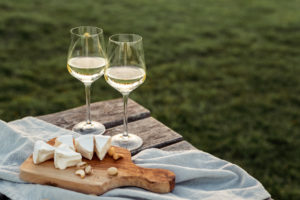 Nothing celebrates impending warm weather like a light, crisp, interesting white wine. I chose the truly underappreciated grape, Verdejo for its fresh spring-like feel. These wines were “rediscovered” in their homeland of Rueda, Spain a few decades ago and rescued from obscurity. The wines made from this grape can have interesting aromas and flavors from a fennel-like herbal quality to citrus and spice. They are even age-worthy, picking up a nutty nuance within a few years in the bottle. During ferment these grapes are known to produce elevated levels of glycerol giving a viscous feel to go along with their crisp acidity. One of the best things about these wines are their current lack of popularity in our domestic market, making them a great value.
Nothing celebrates impending warm weather like a light, crisp, interesting white wine. I chose the truly underappreciated grape, Verdejo for its fresh spring-like feel. These wines were “rediscovered” in their homeland of Rueda, Spain a few decades ago and rescued from obscurity. The wines made from this grape can have interesting aromas and flavors from a fennel-like herbal quality to citrus and spice. They are even age-worthy, picking up a nutty nuance within a few years in the bottle. During ferment these grapes are known to produce elevated levels of glycerol giving a viscous feel to go along with their crisp acidity. One of the best things about these wines are their current lack of popularity in our domestic market, making them a great value.
When I think of Spring, I cannot help but have visions of rosé wines. Although I think many wines in this category are nothing more than pink colored alcoholic acid water, I am still a fan of good rosé. I do have my favorites but I also wanted to show that good rosé doesn’t necessarily need to be pricy. The key is finding a region that is out of the proverbial limelight but is still making good wine.
Umbria, known as the green heart of Italy, is exactly that region and thanks to Nicola Chiucchiurlotto replanting his grandfather’s vineyard, Madrevite is that producer. Bisbetica rosé, the Italian for a shrew (an old woman with a temper) was the first of their portfolio to gain my attention. Made from Gamay del Trasimeno (a colloquial name for Grenache), this wine has some chutzpah and should never be confused with the Provençal style of wine. Although there are a myriad of food pairings one could explore, it would also go well with watching the groundhog stroll around after predicting an early Spring.
producer. Bisbetica rosé, the Italian for a shrew (an old woman with a temper) was the first of their portfolio to gain my attention. Made from Gamay del Trasimeno (a colloquial name for Grenache), this wine has some chutzpah and should never be confused with the Provençal style of wine. Although there are a myriad of food pairings one could explore, it would also go well with watching the groundhog stroll around after predicting an early Spring.
Shadow Wines
The chance also exists that our land beaver buddy will doom us to six additional weeks of winter. In preparation for this prediction, I have selected a few reds that will help us endure the final few frosty weeks and maybe even pair well with grilled groundhog. Both are domestic, from smaller scale producers, and, although at a slightly higher price point, are drinking like top dollar wines.
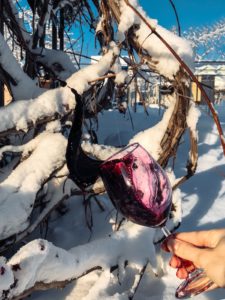 Redolent Wine Company sources grapes from different growers and makes their wines at the GC Wines facility in Amity, OR. The wines are unapologetically low intervention with their philosophy being to capture the true nature of the grapes, the place, and the vintage. After tasting through some of their wines, they have done just that.
Redolent Wine Company sources grapes from different growers and makes their wines at the GC Wines facility in Amity, OR. The wines are unapologetically low intervention with their philosophy being to capture the true nature of the grapes, the place, and the vintage. After tasting through some of their wines, they have done just that.
Nebbiolo is a finicky wine to get right with its sturdy tannins and difficulty with color stabilization but can be monumentally good when done correctly. Although you can find plantings and wines from this grape in Australia, Argentina and California, rarely do they achieve the complexity that we find in Piedmont area of Italy. This is one of those rare times that a talented grower, winemaker and mother nature herself come together to produce something special. The combination of prolonged barrel age along with some time in bottle have softened this wine from a tannic beast to a femme fatale. Label me as seduced.
My final selection for an extended winter forces me out of my usual selections. Attempting to become more self-aware, I realized that I tend to shy away from many California Cabernet heavy wines. In the past, I have wrongfully profiled them as overly alcoholic, over-oaked, over-extracted and have a clumsy feel about them. Granted, much of the time I am correct, but thankfully many producers learn from the error of others and have altered the “California style” of these wines.
One such producer, Aperture Cellars, is a recent addition to my list of top producers in California. Winemaker, Jesse Katz, focuses on cooler climate growing areas for his Bordeaux style wines, which gives an air of freshness that many other producers lack, or worse yet, attempt to incorporate by dumping tartaric acid into their wines.
Aperture has a low-interventionist philosophy, letting the wines tell their story of variety, time and place. Much the same way Jesse’s father has done for decades with his well-appreciated photography, as seen on every Aperture label. Sampling these demonstrates what California can and should strive for in regard to their Cabernet blends. Pour one of these wines for your pretentious cult-wine label-watching brethren and watch the color drain from their face when you tell them the price.
So, we have navigated the potential Groundhog Day predictions to ensure we have the proper selections of wine for the early Spring or extended winter. I, for one, will be standing at the ready with a bottle of red in one hand and white in the other waiting for my furry little friend to determine which cork I shall pop.
Suggested wines
Galerna Verdejo Vino de la Tierra de Castilla $15
Hailing from the province of Cuenca, near central Spain, this wine is named “Galerna” after the wind that runs through the north coast of Spain. Winemaker Ruth Fernández put together this 100% Verdejo from organically grown grapes, using non-GMO yeast, and omitting the use of any animal products (vegan). The wine has a nose of unctuous orchard fruits (pear), tropical (kiwi), citrus blossom, fresh herbs and a slight hint of white pepper spice. The palate is dry, with a broad acidity, and a slightly viscous body (glycerol). There are flavors that lean more citrus (tangerine) versus the nose but maintains the herbal nuances. Pair with gazpacho soups, salads (Greek or Niçoise) and sea bass.
Madrevite La Bisbetica Rosé Umbria IGP $15
This rosé is made from the Gamay del Trasimeno grape (aka Grenache) and gains its color from six to eight hours of skin contact. The wine then spends 4 months in a combination of stainless steel and concrete tanks. The wine has a nose of strawberry, raspberry leaf, and a slight floral note. The palate is dry with mouth-watering, mineral-laden acidity. There are flavors of raspberry, strawberry, brambles, minerals, and a pink grapefruit element. The wine has a savory sturdy quality that I find especially pleasing. Pair this wine with shrimp, charcoal grilled fish, or as an aperitif with some soft cheeses.
Redolent Waving Tree Vineyards Nebbiolo 2018 Columbia Valley AVA $44
This 100% Nebbiolo was aged 24 months in neutral French oak then 6 months in stainless steel. It then spends an additional year and a half in bottle before release. There are aromas of raspberry, rose petal, sweet tar, tobacco, leather, and a slight clove note. The palate is dry, crunchy acidity, and an elegant body interspersed with gritty tannin. The fruit and floral carry through with added elements of dried herbs and sweet pitch. This wine begs for lamb ragú, truffle dishes, or osso buco. With only 72 cases produced, a rare treat.
Aperture Cabernet Sauvignon 2021 Sonoma County $75
A classic Bordeaux style blend with 85% Cabernet Sauvignon, 6% Petit Verdot, 5% Merlot, 3% Malbec, and 1% Cabernet Franc. Aged 18 months 55% new French oak the wine has aromas of boysenberry, blueberry, herbs / spice (thyme, bay leaf, anise), and baking chocolate all packed into an old cedar box. The palate is dry, with lively acid and fine-grained velvety tannin structure. The flavors mirror the nose with some added savory elements. Pair with seared duck breast, grilled pork chop or braised groundhog.